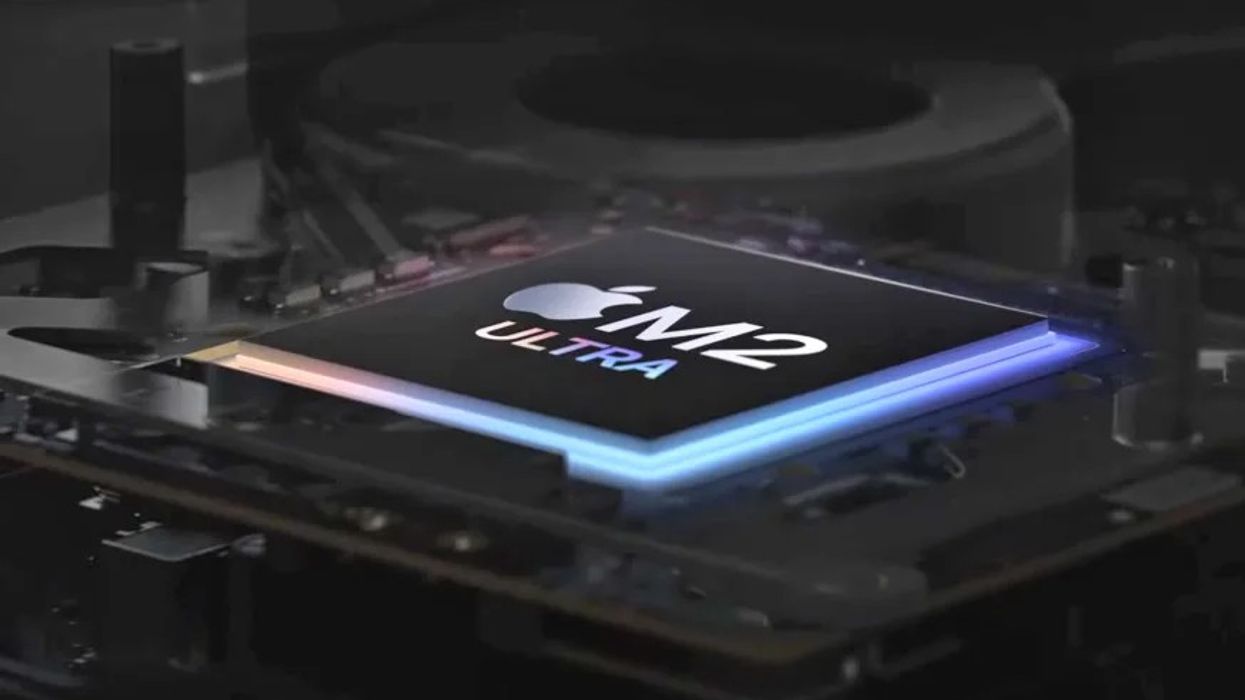How Apple’s M2 Ultra Chip Is Going To Be a Gamechanger for Video Editing
Video editors get ready to rev up workflows with this powerful new chip.

Amongst the many expected, and unexpected, announcements from Apple’s WWDC 2023 this week, perhaps one of the most exciting for film professionals was the introduction of the M2 Ultra. This new system on a chip (which Apple has dubbed SoC) is poised complete the M2 family and deliver huge performance increases to Mac computers.
With a CPU 20 percent faster than the M1 Ultra, a larger GPU up to 30 percent faster, and a Neural Engine that’s 40 percent faster, any Mac with this M2 Ultra powering it is going to represent some of the best computing power on the market. For film pros and video editors alike, this could be a true game-changer for their apps, tools, and workflows.
Let’s take a look at this new M2 Ultra, spec how it compares to the previous M2 chip, and explore what it could mean for your video editing work.

Apple Introduces the M2 Ultra Chip
Simply put, this new M2 Ultra is the largest and most capable chip Apple has ever built. Built using a second-generation 5-nanometer process and utilizing Apple’s UltraFusion technology to connect two M2 Maxgether, this M2 Ultra will rev past the M1 Ultra by almost 20 billion more transistors.
It’s going to make their new Mac Studio and Mac Pro models the most powerful Mac desktop computers ever made.
“M2 Ultra delivers astonishing performance and capabilities for our pro users’ most demanding workflows while maintaining Apple silicon’s industry-leading power efficiency," says Johny Srouji, Apple's senior vice president of Hardware Technologies. "With huge performance gains in the CPU, GPU, and Neural Engine, combined with massive memory bandwidth in a single SoC, M2 Ultra is the world’s most powerful chip ever created for a personal computer.”
With unified memory architecture support up to 192GB of memory capacity, and 800GB/s of memory bandwidth, the M2 Ultra will feature a media engine with twice the capabilities of the M2 Max for some very impressive ProRes acceleration, meaning your video workflows should be faster and more capable than any before in a Mac setup.
The M2 Ultra vs the M2 Max
When compared to the M2 Max specifically, the M2 Ultra is going to be quite a bit more capable and something most video editors are going to want to consider upgrading to in the near future.
Most of the key points of differentiation between the M2 Ultra and the M2 Max have to do with the number of transistors and cores that power this improved performance:
- The M2 Ultra has 2x the number of transistors
- The M2 Ultra has 12 more CPU cores
- The M2 Ultra has 38 more GPU cores
- The M2 Ultra has 100GB of more unified memory
With twice the number of transistors and double the amount of CPU and GPU cores, it’s very reasonable to expect the M2 Ultra to power a performance boost making it most likely twice as powerful. This means if you’re indeed looking for some of the fastest renders and most complicated workflows for your high-end video editing, motion graphics, animation, and more, you’re going to be getting a huge boost.

The Future of Editing
Truthfully, this new M2 Ultra couldn’t come at a better time as the video editing industry is about to (or already is going to) dive into the world of AI. Alongside all the traditional methods of digital video editing, compositing, and motion graphics, new AI technologies are emerging every day which unlock tons of cool (and frightening) ways in which video content can be generated with the click of a button.
While a lot of that processing power might seem to happen behind the scenes, if you’d really like to stay at the forefront of what could be coming with generative AI, you’re going to want as much computing power as possible at your fingertips as well.
Plus, you know, all your own upload, render, and processing workflows could always be faster, too.
How do you feel about this new M2 Ultra chip and its processing possibilities?
Let us know your thoughts in the comments below.











